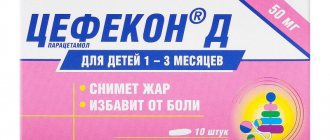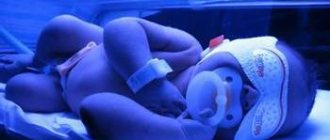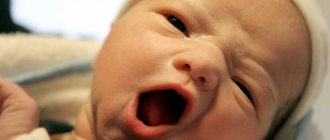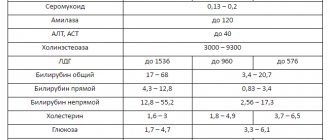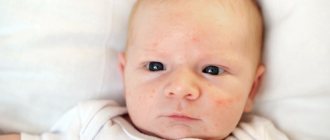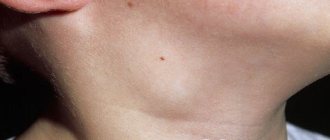The specificity of herpes as a disease is that children become infected with it much more often than adults. The reason here is the widespread prevalence of the virus: even if the parents and immediate relatives do not have herpes, already at the age of two or three years the child will involuntarily encounter a carrier. And how many babies become infected from sick mothers during pregnancy or after childbirth!
It must be said right away: it is impossible to overly protect a child with a normal immune system and state of health from infection by creating sterile conditions for him. The human body is able to develop lifelong immunity to almost all types of herpes, and as soon as a child experiences the disease once, he will be reliably protected for the rest of his life.
It is only important that this first infection passes easily and without complications. And here you already need to know the specifics of different types of viruses and their effect on the child’s body.
Types of herpes found in children
Of the more than 200 types of herpes viruses, 6 types are the most common in humans. Children become infected with them just as easily as adults, and therefore, in many cases, suffer from the corresponding diseases at a younger age. These viruses include:
- herpes viruses types 1 and 2, which lead to all known rashes in the form of transparent blisters in the place through which the infection occurred. Children most often transmit the virus through their mouths with unwashed hands, household items and some foods. Therefore, their symptoms of herpes simplex are most often localized on the lips.
- Herpes virus type 3, called Varicella zoster in Latin. It causes chickenpox, which in rare cases in people who have already had it is replaced from time to time by recurrent herpes zoster.
- Herpes virus type 4, or Epstein-Barr virus, is the cause of infectious mononucleosis. According to statistics, by the age of 13, up to half of children are infected with this virus, the disease in whom occurs in a vague or asymptomatic form. A terrible consequence of infection with this virus is Burkitt's lymphoma, which affects children in the countries of equatorial Africa.
- Herpes virus type 5, also called cytomegalovirus. Its peculiarity is that in most cases the infection is asymptomatic and there are no consequences of infection, which is why the vast majority of people - including children - are carriers of it.
- Herpes virus type 6, very well known to pediatricians for causing sudden exanthema. It is very often confused with rubella, for which it received its second name - pseudorubella.
Despite the fact that all of these viruses are widespread in children, the first three types cause the most trouble. Not only are the diseases they cause characterized by vivid symptoms, but children also often experience various complications in the form of stomatitis, gingivitis, meningitis, encephalitis and other diseases.
Such complications most often appear after children have suffered a primary infection, but relapses are usually much less dangerous. And primary infection with herpes usually causes complications only when the child’s immune system is weakened.
Of all herpes infections, each has its own specific clinical manifestations and characteristics when a child is infected with them, and therefore deserves a detailed separate description. Now we will focus on herpes simplex in children, caused by herpes viruses types 1 and 2.
Signs of chickenpox in babies
The most characteristic sign of infection in infants, and in all people in general, is a rash. How does it start, photo? At first, the rashes are localized, as a rule, in the area of the head and face and appear as several reddish pimples, no more than 1 centimeter in diameter. After a short period of time (maximum within a day), the rash turns into papules (small pimples filled with clear liquid) and spreads over almost the entire body, with the exception of the feet and palms. The rashes are very itchy, so the child will experience considerable discomfort. It is worth noting that scratching or squeezing the rash is strictly prohibited, as this can cause infection in the wounds, and therefore, purulent complications from the skin may appear. In addition to the appearance of a rash on the body, there are frequent cases of rashes in the mouth and mucous membranes. When a rash appears on the mucous membranes, the child experiences pain, which leads to refusal to eat.
The rash can stay on the body for 4-12 days, depending on the severity of chickenpox. It should be noted that the rashes are wavy in nature, that is, the first elements of the rash begin to dry out and become covered with a brown crust already on the second day after their appearance. After this, a calm day may come, the temperature will drop a little, and the child will feel better. Then a new wave of rashes will follow and everything will repeat in a circle. In the future, the entire rash will be covered with crusts. Under no circumstances should you peel off the crusts from the affected areas yourself, as they are a natural barrier to various types of bacteria. After 2-4 weeks, the crusts will fall off on their own and leave behind red-pink spots, which also go away on their own without any medical intervention. If the disease proceeded without complications, then there will be no trace of the rash.
Next, we will look at what to do if a baby has chickenpox.
Symptoms of herpes in children
The symptoms of herpes in children are very similar to those in adults, but most often they are much more pronounced. Much here depends on the age at which the child became infected.
When a child is infected in the first days or even hours after birth, they usually talk about neonatal herpes , characterized by a special symptomatic picture and specific course.
In children of a later age, the symptoms of herpes manifest themselves somewhat differently. So, at the first, prodromal stage, it is not always possible to understand that the child is developing herpes. At this time, the child becomes less mobile, his temperature rises, he experiences severe malaise and weakness. Often at this stage headaches and sore throat appear, which are a sign of herpangina. It’s easy to mistake such symptoms for a cold and start fighting the wrong infection.
At the next stage, red itchy rashes appear on and around the lips, in the mouth, and sometimes around the eyes. As their intensity increases, the strength of the itching increases, which then turns into pain.
Next, transparent blisters filled with colorless liquid appear on the rash. In appearance, they are identical to the same vesicular rashes in adults, but are located over a larger area and can be much more pronounced. When a child develops herpes gingivitis and stomatitis, blisters appear not only on the outer skin, but also in the oral cavity - on the mucous membranes, tonsils, tongue and gums. At the same time, on the gums they look like small white dots, no less painful than vesicles in other places.
Over time, these blisters become opaque and the fluid in them begins to resemble pus. All this time, the child is worried about severe pain, and with herpes sore throat, there are problems with swallowing food. Young children with severe herpes may scream a lot and sleep very poorly.
At the next stage, the bubbles burst, liquid flows out of them, in which viral particles are teeming, there are literally billions of them, and in place of each bubble a small ulcer appears. It quickly becomes crusty and in this form stops bothering the child.
The last stage is the healing stage. The skin at the site of the ulcers is restored, the scabs fall off and no traces of herpes remain.
Neonatal herpes is characterized by approximately the same symptoms, which, however, also has its own specifics.
Symptoms of chickenpox in infants
During the latent period, babies, as a rule, do not have any manifestations of the disease, that is, the infection is already in the body, but the level of virus concentration has not yet reached the required scale. The first symptoms appear in the final part of the latent period of the disease. It is generally accepted that the incubation period in children can last 7-21 days, on average two weeks. It depends on the functioning of the child's immune system. For example, with congenital immunodeficiency, the infection develops very rapidly.
How does chickenpox manifest? The first characteristic manifestation of infection is a high temperature, sometimes reaching 40 degrees. This is due to severe intoxication of the body by the virus and the appearance of temperature is quite natural. The temperature may be accompanied by weakness and malaise of the whole body, headache, chills, fever, twitching of muscles and limbs, pain in the muscles and joints. In this case, the child will cry and most likely refuse to eat.
At this stage, diagnosis of the disease is possible only with the help of special laboratory tests for antibodies against the Varicella zoster virus (the name of the causative agent of chickenpox), however, a day or two after the onset of fever, you will find several reddish spots on the head or face of the baby.
Neonatal herpes: main symptoms and diagnostic methods
Neonatal herpes in children is often called congenital. In many cases, children become infected with herpes during childbirth or in the first hours after it, and symptoms of the disease appear in them in the first days of life. The severity of symptoms and the course of the disease in them depends on the timing of infection.
The most severe consequences of infection of the fetus are in the early and middle stages of pregnancy: in this case, the child may develop hydro- and microcephaly, epilepsy, cerebral palsy, cirrhosis of the liver, hepatitis, and damage to the lungs and eyes.
If a child becomes infected immediately during childbirth or shortly after, he may develop one of three forms of neonatal herpes:
- A localized form, characteristic of approximately 20-40% of newborns with neonatal herpes. It usually affects the skin and mucous membranes of the eyes and mouth. With it, there are usually no generalized symptoms, but single or grouped vesicular elements appear on the skin. Most often, the appearance of blisters occurs a week or two after birth. After another two weeks, with proper treatment, they heal completely, leaving no traces behind.
- A generalized form in which the full range of symptoms characteristic of herpes is observed: initial fever, lethargy, regurgitation, shortness of breath and apnea, cyanosis and symptoms of pneumonia. Very often the adrenal glands and liver are involved in the pathological process. This form of herpes occurs in 20-50% of cases, with a fifth of infants experiencing generalized symptoms without subsequent skin rashes.
- A damaging form characterized by damage to the nervous system. It is characterized by the development of encephalitis, meningoencephalitis, observed in 30% of cases, and with antenatal infection of the fetus, the development of microcephaly, hydrocephalus, as well as the appearance of intracranial calcifications is possible. The manifestation of infection is generalized and is characterized by trembling, convulsions, cerebrospinal fluid leakage, decreased child appetite, and cytosis.
As a rule, the incubation period when a child is infected during childbirth lasts from two to thirty days, and it is after this period that symptoms of the disease appear.
Ways of infecting children with herpes
In most cases, a child becomes infected with herpes through interaction with peers or adults who are carriers of the virus.
In many cases, the child becomes infected from the mother during a relapse of herpes. This is especially true for infants: during this period it is extremely difficult to take all precautions to protect the child from herpes. In addition, it is at this stage that the mother herself often limits her diet, which leads to hypovitaminosis, decreased immunity and relapse of the disease.
In any case, every carrier of the virus, even in the latent phase, can be a source of infection. Therefore, direct contact of a child with a person who has ever had herpes is a risky situation.
In addition to direct contact, a child can become infected with herpes in the following ways:
- by household means, using shared utensils, food or clothing
- by airborne droplets when a person with a recurrence of herpes on the lips next to him sneezes or talks loudly
- from the mother during childbirth or pregnancy.
The latter method of transmission of the virus is most relevant if the mother becomes infected with herpes for the first time during pregnancy. Here the risk of fetal infection is quite high, and such infection can lead to miscarriage.
According to statistics, out of 100 thousand newborns whose mothers do not have immunity to the herpes simplex virus and were infected for the first time during pregnancy, 54% of babies are born with congenital herpes. If the mother has immunity to one of the two types of herpes viruses, then this value decreases to 22-26% of babies per 100 thousand newborns.
A recurrence of herpes in a mother while carrying a child can also lead to infection, but in this case serious consequences are less likely to occur, since the fetus is protected by maternal immunity.
Can a baby get chickenpox?
During the period of intrauterine development and along with milk, antibodies enter the child’s body, providing protection for the child’s body from the negative influence of the environment. Therefore, in the first few months of life, infants rarely suffer from viral diseases.
But a newborn can become infected with chickenpox. Infection occurs in cases where the number of antibodies that suppress the virus in the child’s body is insufficient or the immune system is not able to cope with the pathogen. Chickenpox appears in an infant for the following reasons:
- feeding with artificial formulas;
- early cessation of breastfeeding;
- the mother had not previously had chickenpox.
The last option is the most dangerous, as it does not exclude the possibility of infection of the fetus. In the case of intrauterine infection, chickenpox in newborns provokes the development of congenital diseases, including those that affect the central nervous system. The risk of such complications directly depends on the stage of pregnancy at which the infection occurred.
The period in the first 12 weeks is considered dangerous, when the child’s main organs and systems are formed. A virus that has infected the fetus in the last month usually does not cause complications in an infant.
Chickenpox in children: symptoms and treatment methods - a special case
In addition to intrauterine infection, infection of children after the sixth month is possible. Transmission of the virus in this case is possible from an older child or adults. During this period, infants gradually move away from breastfeeding, and therefore the number of antibodies to chickenpox in the body decreases.
Innate immunity of a child to herpes
If before pregnancy the mother managed to become infected with the herpes simplex virus, then with a high probability nothing threatens her child until the age of six months. In a mother with normal immunity, after the first encounter with the herpes virus (even if it passed in her childhood), the immune system produces antibodies specific to this virus, which, when encountering the virus again, quickly and reliably destroy it.
These antibodies are called immunoglobulins, usually designated Ig . Ig classes M and G are produced against herpes viruses. They are the ones that are looked for in the blood when diagnosing herpes.
IgG successfully penetrates the transplacental barrier due to its small size . They create immunity in the fetus against herpes, with which even a newborn baby will be invulnerable to the virus.
However, the lifespan of these antibodies is only a few months, and after about six months they no longer remain in the child’s body. Then he becomes susceptible to herpes. This is evidenced by statistics: the peak of primary infection in children occurs in the 8-13th month of life.
It is also important that antibodies are transferred to the child along with colostrum and mother’s milk. Therefore, the longer the mother feeds her baby with breast milk, the longer she will be protected from herpes infection.
Accordingly, if during pregnancy a mother becomes infected with herpes for the first time, the virus affects both her tissues, without, however, causing her too much trouble, and the tissues and organ systems of the fetus, which is often the cause of many complications and disorders in its development.
Where does it come from
The Varicella-Zoster virus can enter a baby's body in several ways. The first of these is transmission from a sick pregnant mother through the blood. Is chickenpox dangerous during pregnancy? We found out here.
The second is the penetration of the virus from the outside after birth from any other carrier of the disease, including the mother. We have a separate article on how you can become infected with chickenpox.
If the expectant mother does not have immunity to chickenpox and becomes ill during pregnancy, then infection occurs in utero. Such infection of the fetus occurs on average in 24% of cases.
The risk of the baby being affected almost doubles if the disease occurs in the last four weeks before birth. A fetus affected by chickenpox is born with traces of the disease.
The chickenpox virus has a long incubation period of up to three weeks and may not appear immediately in newborns.
Special monitoring is established for a child who has been in contact with a chickenpox patient.
When the first symptoms of the disease appear, mandatory hospitalization is indicated, since children in the first days of life are extremely difficult to tolerate the disease.
Most likely, if infection is suspected, mother and child will be taken under the supervision of specialists immediately after birth.
After the neonatal period (the first four weeks of life), the baby can also become infected with chickenpox, but a month-old baby is already better prepared to fight the virus.
Most often, the disease affects babies in the first year of life who are fed formula milk. The immunity of such children is vulnerable to viruses of any nature.
Complications of herpes in children
In general, it is not herpes itself that is dangerous for children, but its complications. They can lead to serious dysfunction of individual organs, and sometimes even to disability and death.
Among the most common and dangerous complications of herpes in children are the following:
- Encephalitis and meningoencephalitis, developing in both newborns and older children. Without treatment, such forms are lethal in 90% of cases, and with normal treatment - in 50%.
- Cerebral palsy develops as a response to a severe form of infection in newborns in the absence of treatment.
- Eye diseases: keratoconjunctivitis, iridocyclitis, corneal erosion, episcleritis, chorioretinitis, uveitis.
- DIC syndrome.
- Stomatitis and gingivitis, often developing as a clinical form of herpes
- Liver damage, sometimes even hepatitis.
- Herpangina and inflammation of the tonsils.
In general, severe forms of herpes in children are characterized by damage to the nervous system, so the most dangerous are encephalitis, epilepsy and the development of cerebral palsy. It is important that generalized forms of herpes in children in the early stages are often confused with other infections, which leads to a delay in treatment and missed time to combat the disease. That is why timely diagnosis of herpes in children is of utmost importance.
How to cure chickenpox in children under one year old
The method of treating chickenpox depends on the severity of the disease. There are mild and severe forms of the disease.
With a mild course of the disease, there is a small amount of rash, normal temperature or a slight increase in temperature.
A severe form of the disease is accompanied by hyperthermia, profuse rashes, rashes on the mucous membranes, and swelling of the throat. Find out about the features of treating chickenpox in the mouth here.
The severe form is most typical for babies in the neonatal period, as well as up to three months.
Mortality from chickenpox is high in the first weeks of life; up to a third of infected babies die.
Light form
Mild disease does not require special treatment. It is enough for parents to relieve unpleasant symptoms and eliminate intoxication:
- It is recommended to organize cool fresh air with optimal humidity (50-60%) in the room. It will be easier for a baby with a fever to breathe, and the pockmarks will not itch excessively.
- Infants should receive regular water treatments to maintain body hygiene and relieve itching. Doctors advise adding a little potassium permanganate or soda to the bath. You should also keep your nails short. You can find out exactly how to wash and bathe a child with chickenpox by following the link.
- Newborns and infants have undeveloped thermoregulation, so you need to carefully monitor changes in the baby’s body temperature. If there is no elevated temperature, air baths will be useful. You can leave the baby without clothes for 10-15 minutes at normal room temperature (from 18⁰ C).
- Clothes should be made exclusively from natural materials that absorb sweat well. Cotton fabrics and linen are best suited. It is better to choose clothes without elastic bands or other elements that can rub out pockmarks. The baby needs to change his suit several times a day, and bedding needs to be changed daily.
- A one-year-old child who can already move around the house independently should have a “safe environment” - a clean floor, toys, pieces of furniture. The fact is that burst pockmark bubbles are the threshold for infection.
- It is important to ensure your baby drinks plenty of fluids. Breastfed babies are often put to the breast; bottle-fed babies are given water. Even if the baby refuses to drink, it is recommended to give several teaspoons every hour.
An alternative point of view: doctors usually advise treating blisters with a solution of brilliant green or furatsilin to dry and disinfect the wound.
The famous pediatrician Evgeny Komarovsky defends the opinion that there is no need for lubrication with brilliant green.
It is enough to use antihistamines to eliminate itching and keep the body clean.
You will find the causes, symptoms and treatment, preventive measures, as well as photos of herpes on the face in this material.
You can learn about the diseases for which Mustela Stelatopia cream emulsion is used in this article.
Find a list of emollients for atopic dermatitis in children here: https://udermatologa.com/zabol/derm/atop/chto-takoe-emolenty-spisok-preparatov-pri-atopicheskom-dermatite-u-detey/
Heavy
General recommendations for severe chickenpox remain generally unchanged. However, they are accompanied by additional drug therapy.
Newborns who are bottle-fed need the most support.
Targeted antiviral drugs are used for treatment. The most effective drug is considered to be one that directly fights herpes viruses. This is Acyclovir and its analogues.
Antiallergic medications are used to eliminate itching and inflammation. Infants are prescribed drugs based on loratadine and cetirizine dihydrochloride.
For children, it is most convenient to dose the drug in the form of drops. Antihistamines “Fenistil”, “Zodak” and others are used in treatment.
In order to bring down a high temperature, medications with basic components in the form of ibuprofen or paracetamol, as well as their combinations, are used.
In especially severe cases, an injection based on analgin and diphenhydramine may be recommended.
The latter is carried out extremely rarely, in the absence of effect from other antipyretic drugs and exclusively under the supervision of a doctor.
You can find out how many days chickenpox lasts here.
Diagnosis of herpes in children
Speaking about the diagnosis of neonatal herpes, it is necessary first of all to talk about systematic and continuous monitoring of the mother’s condition during pregnancy.
Registration at this stage of a recurrence of herpes or a primary infection will allow in the future, if the child develops corresponding complications, to quickly determine their correct cause.
An important method for diagnosing herpes is to examine the child to identify characteristic rashes. In addition, a child’s crying and refusal to eat may be the result of damage to the gums and mucous surfaces of the mouth.
Quite clear signs of herpes are also convulsions of unknown origin or sepsis that does not go away with the targeted fight against bacterial infections.
In addition to symptomatic diagnosis, it is necessary to conduct instrumental and laboratory studies:
- “gold standard”, based on cultivating the virus from various fluids and mucous substances of the child’s body and characterized by high sensitivity and specificity
- electron microscopy
- immunofluorescence method and direct detection of virus in vesicular fluid
- polymerase chain reaction
- study of pathologies of the placenta, the condition of the child’s heart, liver, brain tomography.
In most cases, when blistering rashes appear, further diagnosis of herpes is no longer required, and it is necessary to begin treatment of the disease as soon as possible.
Prevention and prognosis for chickenpox
A set of measures aimed at preventing chickenpox in newborns includes:
- timely vaccination of the mother (during pregnancy planning) and baby;
- limiting contact between the child and sick people;
- strict adherence to hygiene requirements.
Is chickenpox dangerous in young children? According to doctors, only an advanced disease in a severe form can lead to the development of complications or death . In other cases, the disease ends with the baby’s complete recovery.
Treatment of herpes in children: medications, folk remedies, treatment regimens
When treating herpes in children, it is extremely important to be aware that even a localized form of herpes without proper control threatens to develop into a generalized infection.
If any external symptoms of herpes appear in newborns or older children, antiviral therapy, for example, with Acyclovir, is necessary. It is administered intravenously into the body in an amount of 45 mg per kilogram of the child’s body weight per day. If the infection is generalized or there are symptoms of meningoencephalitis, the dose should be increased to 60 mg/kg per day.
Treatment periods for localized and generalized forms are 14 and 21 days, respectively.
It must be remembered that enteral administration of Acyclovir is often ineffective.
The areas of rashes on the child’s skin themselves should be treated with Acyclovir or Zovirax ointments 3-4 times a day.
If a child has damage to the eyes and periocular membranes as a result of the disease, they are prescribed treatment with a 3% solution of Vidarabine, a 1% solution of Yodioxyuridine, or a 2% solution of Trifluridine.
The immunoglobulins Pentaglobin, Sandoglobin, Intraglobin, Cytotec, Octagam are very effective in combating herpes infection in children. They are direct destroyers of the virus in the body and therefore are widely used in the treatment of generalized infections. Interferons are often used - Viferon 150,000 IU 1 time per day rectally for 5 days - and antibiotics to suppress activating microflora.
At the same time, the child should be treated for maintaining the vital functions of his body.
Among the folk remedies for the treatment of herpes in children, decoctions and infusions of St. John's wort and licorice are used. They promote rapid healing of ulcers at the site of the rash.
There is no need to be afraid of the penetration of the herpes simplex virus into the mother’s milk if her disease relapses. Even with the treatment of the child, it is necessary to continue breastfeeding. Exceptional cases from this rule are situations when, during a recurrence of herpes in the mother, the rashes are on the chest.
Forms of the disease
At an early age, the infection most often occurs in a mild form and does not pose a threat to life and health, but chickenpox in children under one year of age is a completely different matter. How is chickenpox tolerated in children under one year of age? It's often difficult. This is due to two factors. Chickenpox in children under 1 year of age can pass easily if the mother, during pregnancy or breastfeeding, passed on her immunity (antibodies) to the baby. Under such circumstances, you may not notice how your child gets chickenpox, since the disease will proceed without an increase in temperature, or with a minimum temperature, and the rashes will be insignificant. If the child has not received antibodies from his mother to fight the infection, then his immature immunity will alone resist the virus, and this is not yet feasible for him.
How does chickenpox occur in children under one year of age? There are 3 forms of the disease:
- Mild form of chickenpox. It is characterized by a low temperature (up to 38 maximum), rashes on the body or on the oral mucosa in small quantities, practically do not itch and disappear 4-5 days after the first elements of the rash appear. Treatment for this form is exclusively symptomatic, that is, actions are aimed at alleviating the symptoms of infection. Does not require special medical intervention;
- Moderate form of chickenpox. In this form, the virus in the body causes severe intoxication, since its concentration is high. The consequence of this is a high temperature (38-39 degrees), rashes on the body in a large volume and everywhere, accompanied by severe itching. A rash may appear on the mucous membrane. The rash goes away within 6-7 days. To treat this form, antipyretic drugs are used, as well as homeopathic and antihistamine ointments and remedies;
- Severe form. The concentration of the virus in the body is high. Temperatures can reach 40 degrees. The rashes are very abundant and distributed throughout the body, as well as in the nose, mouth, and eyes. The itching causes serious discomfort and the child cannot sleep. A rash on the mucous membrane can cause suffocation. The rash can last on the body for 9-10 days or more. It is reckless to treat this form of chickenpox at home, since serious antiherpetic drugs and immunoglobulin injections are used for therapy;

